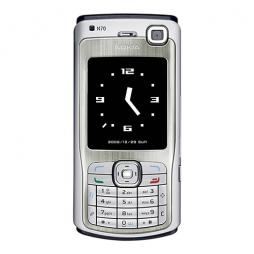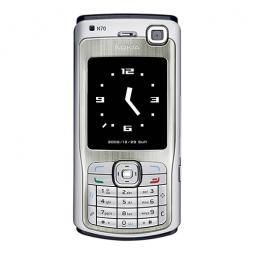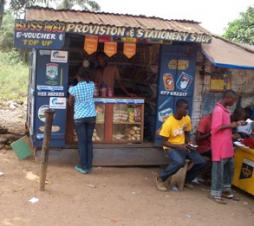CGAP
Posted by AnneryanHeatwole on Sep 06, 2011
And, we are back! Today's Mobile Minute brings you coverage on cross-platform mobile messaging, increased network usage rates for MTN Uganda subscribers, strategies for implementing mobile money programs in post-conflict/disaster areas, and a demographic breakdown of U.S. smartphone users.
- ChatON, a new, cross-platform mobile messaging service from Samsung, brings texts, group chats, and multimedia sharing to a variety of handsets and operating systems. According to Samsung, the messaging service will work on both feature phones and smartphones, and will operate on a variety of platfroms including Android, Apple, and RIM/BlackBerry.
- On September 1st, MTN Uganda announced an increase of up to 100 percent of their network usage prices. The International Business Times reports, "MTN has increased the rate it charges customers for calls to another network by a third to 4 shillings a second while those for calls across its own network will double to 4 shillings. The changes take effect this weekend." The company says this was done to account for an increase in operating costs and as a response to inflation in Uganda.
Posted by AnneryanHeatwole on Aug 01, 2011
The Mobile Minute is back with the latest mobile news. What's happening today? Nielsen Wire looks at smartphone penetration in Asia, RIM lays off 11% of its worldwide workforce, CGAP investigates how network operators can incorporate mobile financial services into their operations, [x]Cube Labs turns Android's history into an infographic, and Read Write Web looks into the latest developments in the use of near field communication technology for mobile payments.
- Curious about the smartphone market in Asia? Nielsen Wire looks at the rapid growth of smartphones in Asia. Although current smartphone penetration in the region is less than 20%, a Nielsen survey of consumers revealed that nearly half of respondents plan to buy a smartphone within the next year. Nielsen Wire investigates what the anticipated increase in smartphone ownership will mean for how people access the Internet, how network operators will price their data plans, and how mobile advertising will adjust to a new market.
- Wired reports that RIM (the makers of BlackBerry devices) announced on July 25th their plans to lay off 2000 employees, roughly 11% of its worldwide workforce. The move comes as RIM has lost market share to the growing popularity of newer operating systems like Apple's iOS and Google's Android.
- CGAP's "How to Run with Mobile Money and Not Fall" article examines how mobile network operators can incorporate mobile financial services into their current business models. Some of the advice for successfully incorporating mobile money services includes using multiple distribution methods (such as both on-phone purchases and traditional street airtime sellers) and getting support from/sharing knowledge among multiple departments.
- If you like charts and graphs, check out this history of the Android operating system. Covering everything from its founding date (2003), to the Google buyout (2005), to the launch of the first Android device (2008), to present day releases, the infographic maps out each update in Android's development.
- Near field communication (NFC) technology allows smartphone users to transmit information to nearby contacts. Read Write Web recently investigated some of the new developments in the NFC field for turning smartphones into credit cards. The first article looks at how the company Isis partnered with four major American credit card companies (Visa, MasterCard, American Express, and Discover) to develop wireless payments. The second article looks at the Jumio payment company's launch of Netswipe, which "turns any webcam into a credit card reader, both on the desktop and on mobile."
[Mobile Minute Disclaimer: The Mobile Minute is a quick round-up of interesting stories that have come across our RSS and Twitter feeds to keep you informed of the rapid pace of innovation. Read them and enjoy them, but know that we have not deeply investigated these news items. For more in-depth information about the ever-growing field of mobile tech for social change, check out our blog posts, white papers and research, how-tos, and case studies.
Image courtesy Flickr user QiFei
Posted by VivianOnano on Jul 01, 2011
Branchless Banking 2010: Who’s Served? At What Price? What’s Next? data sheet 1810 Views
Author:
McKay, Claudia; Picken, Mark
Abstract:
This Focus Note evaluates the evidence from 18 branchless banking providers with a collective total of more than 50 million customers (see Table 1) to answer three questions:
- Does branchless banking reach large numbers of low-income and unbanked clients?
- Are prices for branchless banking lower than prices for traditional banking for the kinds of transactions low-income and unbanked people want to do?
- What other services do these customers want from branchless banking?
The answers to these questions have implications for the business case, customers, and those who hope that branchless banking can boost financial inclusion.
The data offer some answers. On the question of scale, branchless banking can reach large numbers of the unbanked relatively quickly. CGAP looked at the outreach of eight providers globally for which good data were available by drawing on 13 studies that surveyed 16,708 branchless banking clients. The eight providers average 3.73 million active registered users, of which 37 percent or 1.39 million were previously unbanked.Five of the providers reach more previously unbanked clients than the largest microfinance institution (MFI) in the provider’s country—on average, 79 percent more.
These five branchless banking providers grew quickly, surpassing the largest MFI in number of customers within three years. This is not to suggest branchless banking is replacing or eclipsing MFIs. The services branchless banking typically provides (payments) are complimentary to MFI microloans: both meet a widespread need for which clients are willing to pay.
Posted by KatrinVerclas on Nov 01, 2010
Is mobile money living up to the hype? Does it provide more and better financial services for low-income and poor people? Our great friends over at CGAP, the definitive source on credible research on mobile money and branchless banking, have gathered data on 16,000 mobile money customers in seven coutries to understand better how far branchless banking is reaching the unbanked. The results are published in a new CGAP paper.
As fas as we know, this is the first time such an extensive data set has been collected. It sought to answer three questions: Is mobile banking reaching poor customers? Is it more affordable than traditional banking? And lastly, do customers get what they want?
The CGAP researchers looked at 18 branchless banking providers with more than 50 million customers in 10 countries. What did they find?
Posted by MohiniBhavsar on Oct 06, 2010
Branchless Banking Pricing Analysis data sheet 2279 Views
Author:
Claudia McKay, Mark Pickens
Abstract:
In this comprehensive analysis, CGAP assessed whether branchless banking or mobile money services are more cost effective or cheaper for low income people than formal banking. The authors, McKay and Pickens, compared pricing of 16 leading branchless banking services across eight ways that customers use branchless banking. They subsequently compared the pricing of these services against 10 formal banks and other informal money transfers options.
The eight use cases refer to: 1) sending money transfer, 2) receiving money transfer, 3)short-term safekeeping, 4) medium term savings, 5) bill payments, 6) high usage, 7) m-PESA customer, and 8) kenya bank customer.
The results say that branchless banking is 19% cheaper than banks, and have a lower transaction value. Additionally, branchless banking is 54% cheaper than informal options formoney transfer.They also discuss in detail how pricing influences customer usage.
Posted by KatrinVerclas on Dec 11, 2008
CGAP, one of the leading organizations conducting research and providing leadership in the mobile banking space in the developing world, is holding a live webcast today from 2-5 pm Eastern Time (-5 GMT). Here are the details:
Mobile Banking for Poor People: Pioneer Perspectives
a CGAP roundtable and webinar
Dec. 11, 2008 | 2:00pm – 5:00pm
World Bank Headquarters, Washington DC | online at http://technology.cgap.org
By the end of 2008, the UN says there will be four billion mobile phone connections globally. Millions of air-time resellers and retail agents in developing countries make it possible to distribute financial services at far lower cost than through traditional channels.
Posted by KatrinVerclas on Sep 24, 2008
**Update***
Bill Clinton is announcing the commitment from a group of members of the Clinton Global Initiative to provide access to financial services to millions of people currently unbanked and living under $2 a day. Some of the people on the stage are Elizabeth Littlefield from CGAP, Dawn Haig Thomas from the GSMA Development Fund, and the Sosas from MPower Ventures, Brian Richardson from Wizzit, and others who are committing more than $100 million to mobile fincancial services for the poor.
*****



